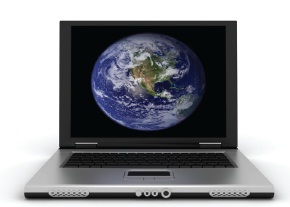by Andrew Robinson
When you find yourself moving countries, and you have a collection of electronic gadgets and equipment, a little planning goes a long way. With permanent moves or frequent business trips overseas, a person should think about what items are going along, and where you are ending up. Electric power standards are very different around the world; electronic equipment from Japan or the US are relatively similar, but Australia, the UK and mainland Europe, for example, have very different power systems to Japan and steps need to be taken to make sure when you plug your laptop or stereo into the wall socket, that you don’t get a plume of acrid smelling black smoke. A Japan-purchased item is expecting a 100-110 volt wall socket, and along with the shape of the plug being different, the 240v power in a hotel or a new home can quickly cause problems.
Most modern laptops from Apple, Dell and others can have ‘international’ power cords, but check with the manufacturer. Electronic shops will have ‘step up/down’ transformers for adjusting the power to your devices, and one of those long power strips plugged into the transformer can be convenient. ‘International’ plug adapter sets can be purchased at airports or in many electronic shops.
Travel insurance is a must when moving any kind of expensive belongings and having the original packing boxes for your computer can be good for transport, as they usually come with good packing. If you are shipping things like desktop computers and home TV or stereo equipment, first check to see that the standards where you are going match the standards where the equipment was purchased. Japan-bought DVDs will not play in US-bought DVD players and vice versa, and NTSCcompatible TVs in from Japan will not work in countries that have a PAL standard, like the UK and Europe. There are TVs and ‘region-free’ DVDs that are designed for international standards, so if you are planning to purchase such things try to find models that will fit your planned destination. Many warranties are not worldwide, so check this before you buy as well.
Finally, your electronic data—have multiple backups of your data, and include one copy in your carry on luggage. When leaving a region, it’s also a good idea to set up an email account that is ‘international’ in scope, like Google’s Gmail or Yahoo! mail, so that when your old local email is stopped, people know the new alternate address.
Thanks to Andrew Hamilton, Victoria Muir and Jason Wik for their input in preparing for this article.









